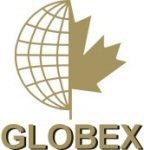By Divya Rajagopal
TORONTO (Reuters) -Canadian miner Allied Gold could look at alternative options for a power supply deal at its Sadiola mine in Mali following a surge in gold prices and the emergence of new opportunities, its CEO told Reuters in an interview on Monday.
The gold miner signed an agreement in February with UAE-based Ambrosia Investment, giving Ambrosia a 50% stake in the mine in return for installing a new power supply system that would have improved the mine’s costs. Allied Gold was also supposed to receive $500 million, with approximately $250 million in upfront cash consideration from Ambrosia.
The deal is yet to close.
Allied Gold CEO Peter Marrone said the deal may close in June, but if it does not, it is because other options have become available to the company.
“Our position in the country has changed dramatically along with gold prices,” Marrone said. “The world has changed since we put the deal together.”
Gold prices have surged nearly 30% this year to date and hit a record $3,500.05 per ounce on April 22.
Ambrosia Investment did not immediately respond to a request for comment.
Marrone said the universe of power solutions for the company changed dramatically after Allied Gold signed a new mining convention with the Mali government last year.
Mali is Africa’s third-largest gold producer and the military-led government wants to increase revenue from the mining sector. The government believes current arrangements are unfair and has said that foreign multinationals must comply with its demands if they want to continue operating.
The country is in dispute with another Canadian miner, Barrick Mining, which is the only gold miner that has not signed Mali’s new mining code.
Allied Gold said it took a pragmatic approach to settling with the government.
“We looked at how best we can deliver returns to our investors, and came to the conclusion that let’s take an action based on cooperation and support,” Marrone said.
Allied Gold, already listed in Toronto Stock Exchange, began its dual listing on Monday on the New York Stock Exchange.
(Divya Rajagopal in Toronto; Editing by Nia Williams)















